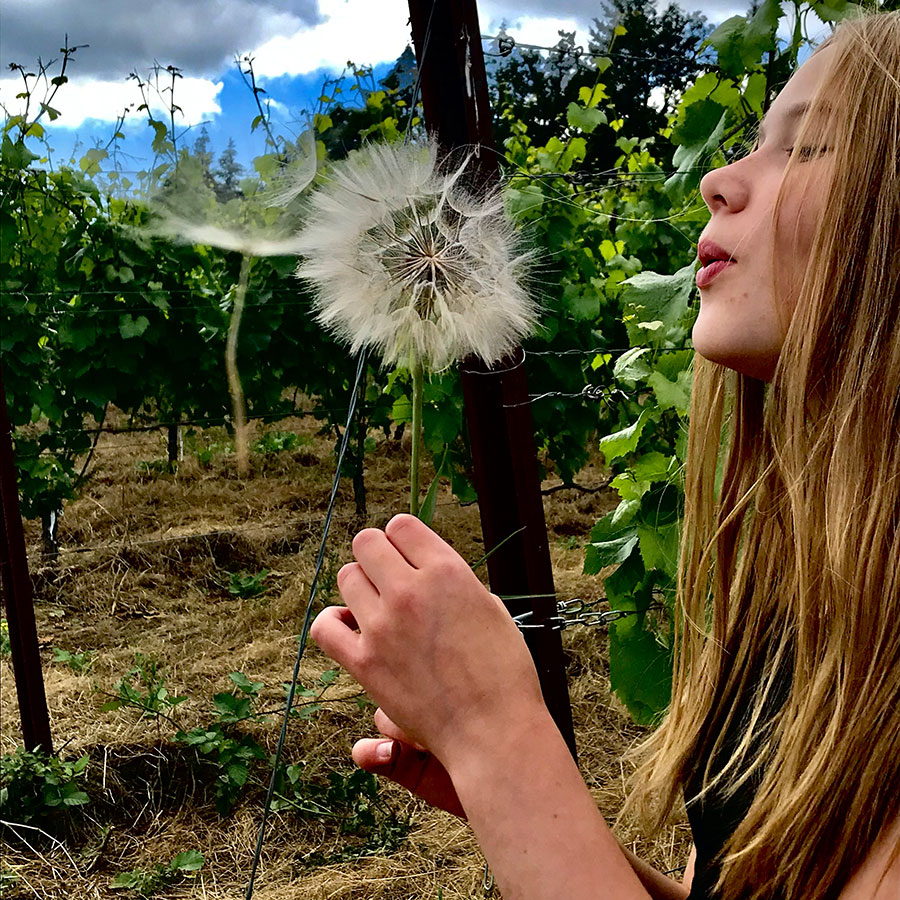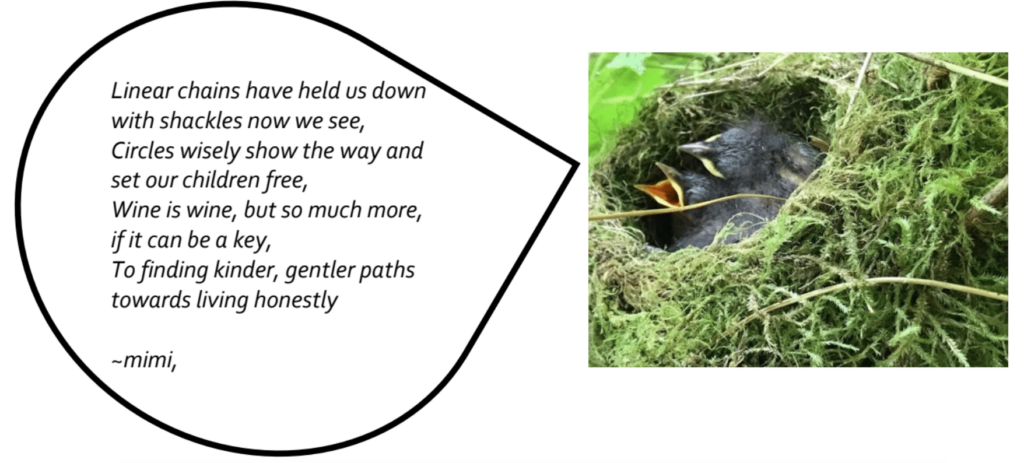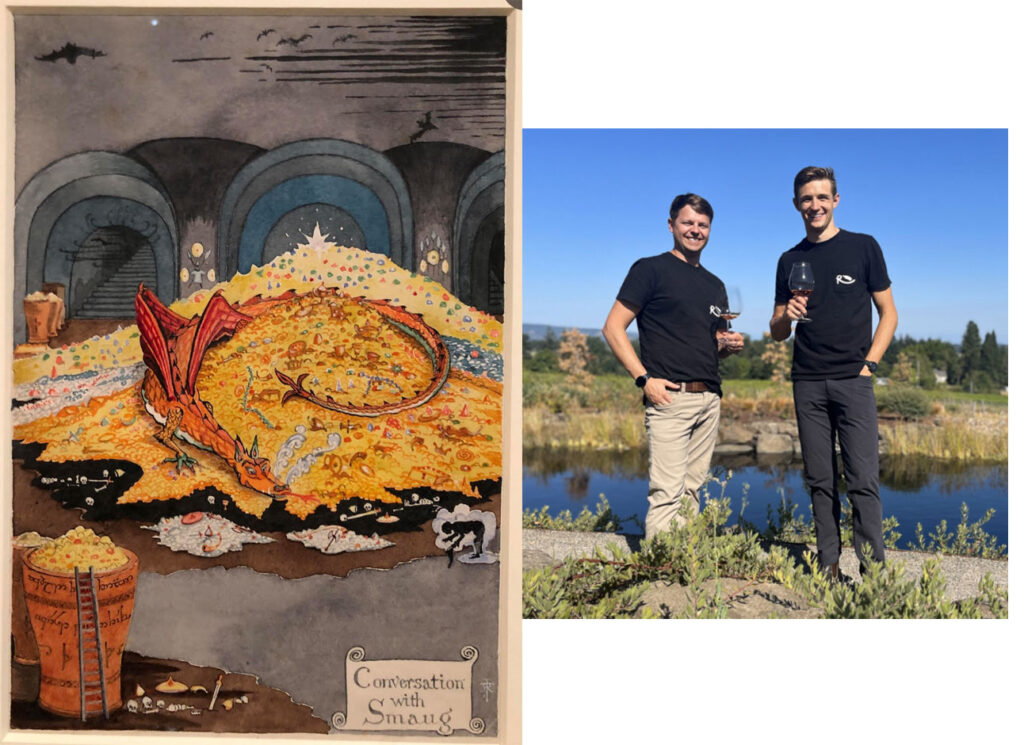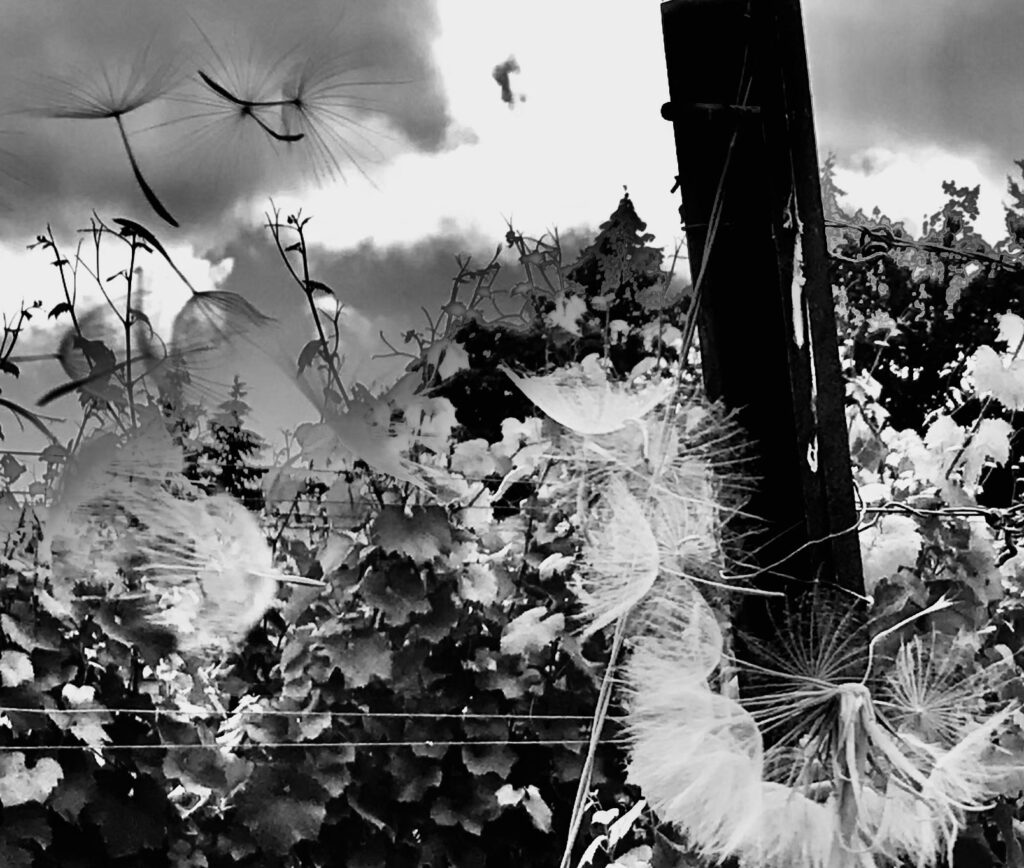
Dear Friends,
I realize that my personal fear of email overload provides a comfortable excuse for being terrible at communicating with those of you who have, in fact, volunteered to receive emails from me. But I like to think I’ve spared you from anything extraneous, waiting instead to share only what I hope you will find interesting, pertinent, and worthy of your time.
Since I last wrote I’ve been waiting for the first substantial vintage of ‘new’ Hope Well to be ready to release, but not idly waiting. In fact, the lack of emails is a direct consequence of what might be described as a campaign of project bingeing. Between the flows of work at Hope Well, I’ve had the great pleasure of working with amazing people on agroecology programs, I wrapped up an amazing Adventure Partnership with Salmon Nation, partnered on what will hopefully be a decades-long effort to restore hydrologic stability at catchment scale with the Abuelitos Foundation, and continued the work with the Regenerative Viticulture Foundation. All of this has generated volumes of topics to write about, but no time to write.
But today, I’m making time, because I’ve got something really important I want to share with you. It’s the kind of thing that I hope will insert itself so stealthily into your subconscious that the phrase “circular supply chains” replaces that one song that gets so stuck in your head you swear it’s been months since you could even remember any words to any other song you’ve ever heard in your life.

Now, I know you’ve come to expect my words to revolve around the natural world, farming, biodiversity and tiny microorganisms, and today we’re going a little off-script. But make no mistake, this is not just related, it is, in fact, the huge, looming, trunk-swinging elephant in the wine room.
Packaging is a conspicuously unsexy topic for any product, which is probably why we need to talk about it as much and as often as we can. Generally speaking, it’s the things we don’t talk about that are hiding the biggest offenses, stoking our strongest fears, and keeping us stuck in a vortex of assumptions, most of which are not true, but all of which pull us away from real solutions.
Case in point: glass bottles. In the last several decades, criticism of egregiously heavy wine bottles from retailers and wine writers has increased significantly, and that criticism has helped open the door to deeper scrutiny of packaging in discussions about the environmental impacts of wine production.
We now have enough meaningful life cycle analyses and data to show that for any given winery, packaging, and notably glass bottles, accounts for up to 60% of a winery’s carbon footprint, and that percentage gets higher as the winery improves in other areas, like farming and energy use. This is an essential conversation that has really brought accountability to wineries taking sustainability seriously. Programs like NapaGreen and LIVE here in Oregon offer wineries the opportunity to audit their Carbon footprint in order to identify the most significant opportunities for improvement. Most wineries find that their bottles represent a scary percentage of their environmental impact. Like all industries, however, fear of the repercussions for changing packaging has kept the packaging sea change from a lightning speed shift. Fear that customers associate weight with quality has kept many high-end wines in heavy bottles, but even if this association were real, do we believe that our beloved collectors lack the ability to grasp the arbitrary nature of such a link? Do we imagine them, Smaug-like, perched in their wine cave on top of a heap of glistening, super-heavy, empty bottles?

Left: Dragon | Right: Waste Slayers (who love dragons) and Reuse Pioneers, Adam Rack and Keenan O’Hern
Glass companies have responded by rolling out lighter weight bottles, and even lightweight or bulk packaging options like plastic bag-in-box, aluminum cans, plastic bottles, and more. I was thrilled when I found a sub-400-gram burgundy bottle for the Hope Well wines. It wasn’t scary to put the wines in a lightweight bottle; in fact, it felt so wonderful to have the option and be able to address what I consider to be a huge contradiction of my values. Even at 395 grams, though, it has felt very incongruous, knowing what I know about glass recycling in the United States.
There is a parallel here between packaging and farming. There are brilliant solutions, solutions that work, that create jobs, that are truly sustainable and present opportunities for real, systemic change that can meet some of our biggest challenges. But because they are old, because they are from the past, we think of them as dead. But just as indigenous land management strategies, re-employed under new terms like regenerative, or agroecological, are healing the wounds of industrial farming, so also reuse, which used to be essential to the pride in frugality that forged the American spirit, is the way forward with packaging.
Which brings me to the star of today’s show: Revino returnable reusable wine bottles.

For your rapid education, I am delighted to plagiarize directly from Revino’s excellent resources the following information. (Please note I am not paid by Revino, I do not have stock in Revino (but you should!) and I am not receiving any compensation from Revino for my shameless outpouring of giddy good news that they have gifted the wine industry. )
Consider this: the global annual production of wine bottles alone results in a staggering 40 billion lbs of CO2 emissions. To put it in perspective, that’s equivalent to the electricity use of 3.6 million homes for a year or the charging of one trillion smartphones.
Recycling Isn’t Working; Reuse is better anyway!
- Less than 31% of glass containers are recycled in the US, meaning that the majority (70%) of glass wine bottles end up in landfills. 3.6 Billion wine bottles in the US end life in landfills annually.
- An Oregon DEQ 2017 report highlights that the Oregon Wine industry’s most significant carbon emissions stem from packaging and distribution. It strongly advocates for a shift to reusable bottles, which provide the most substantial impact on offsetting emissions.
- Reusing glass bottles can reduce the wind industry’s impact on global warming by 77%, compared to recycled bottles. – Reuse is a climate solution.
Revino’s Returnable, Reusable Solution:
- Glass is the only inert and plastic-free packaging option for wine. Wineries that use glass don’t need to change their winemaking process to account for reactions with the packaging (plastic), and they can confidently age their product with grace.
- By 2030, Revino reusable bottles could save 55 million pounds of CO2 emissions and divert 23 million pounds of waste!
One of the greatest joys of being an independent wine producer is that I can make wholesale changes without defending my reasoning, because those changes align with my values. I like to imagine that you’re here because we share some of those values. So it doesn’t scare me even a little bit to make the following announcement. No, in fact, the joy and excitement I feel sharing this news with you broke me out of almost an entire year of newsletter drought!
By now you may have guessed that I am delighted to announce that we are ready (almost, like, within weeks) to share the 2023 Hope Well Pinot Noirs and the 2024 Hope Well Chenin Blanc with you, ALL in Revino reusable bottles.
If you buy any Hope Well wine from 2023 vintage on, and if you live in Oregon, you can return the empty bottles to Bethel Heights (where you pick them up if you are a pickup order,) or to any of these locations. Revino’s closed-loop system collects, cleans, and redistributes bottles, helping to cut carbon emissions by 85% compared to even the lightest weight single-use bottles.
But what about the bottles you ship out of state, Mimi? Why would you put those in a returnable reusable bottle? Friends, this is probably the most important part of my message today. While several wineries have opted to use Revino bottles for the wines they sell primarily in-state, almost none have committed 100%. That might make sense at first, but you know how I love the devils in the details, so let’s fill your hat with questions to ask of other wineries you like to support.

If we can help Revino succeed, their near-future plans include a wash facility in California, and they have already partnered with third-party reverse logistic companies like OBRC, CLINK, and Recyclops, who operates in 33 states. As they expand into other markets (maybe yours!) they can collect back bottles in each regional wine reuse ecosystem. It is our job, it is MY job, to flood the national market with wines in these reusable bottles.
Revino is a startup. They are altruistic, entrepreneurial elves who have handed the wine industry the most incredible gift it is likely to receive in this generation. But like all great stories, they are underdogs. They saw a critical problem and the opportunity it represents. They researched every aspect of the wine supply chain, made critical connections with every player in that supply chain, and designed a solution with exhaustive feedback from all. They started with nothing, they are building something from the ground up, and they cannot do it alone. You see, it is not for Revino to make this work. They’ve just built a beautiful key. But wine is the lock in the gate between where we are now and where we want to go.
I’ve done the math, and even if only my in-state bottles are reused, I’m doing better overall on Hope Well’s CO2 contribution from glass, because Revino is produced by a local, domestic glass manufacturer, with over 50% recycled content. This cuts down on the supply chain emissions contributions of sourcing the empty glass in the first place (usually from Europe or China), offering an 85% reduction in emissions compared to the standard alternatives. At three uses, a reusable bottle is carbon neutral, and even with a lighter bottle I cannot come close to beating that.
As a person who has the great fortune of being able to make and create works that stand in time as statements of love and wonder for a place and people that mean everything to me, I search for answers to the great questions around the impact of every aspect of that work, because I hope that you hold me accountable to the questions you have. I am overcome with gratitude for Revino as they work SO HARD to get wineries on board with this most beautiful gift they built for us. I want them to succeed, yes, but friends, we NEED THEM to succeed and thrive so that we can join other world leaders in reuse towards truly responsible, circular economies.
In designing the future we want, some hurdles are higher than others. Packaging is one of those, and we are going to have to face it head on. Revino is the supershoe (if this is an unfamiliar term, see here) that will beautifully support our wines as they clear that hurdle. I hope you will check them out, seek out those wineries that support them, find out how our state is supporting them, engage in this reuse ecosystem (it feels SO good, and there are more and more of these in other products every day), and most importantly, ask the questions of the companies whose products you enjoy. They need to hear your voices!
See this article by Hannah Wallace, an excellent breakdown of the current state of glass recycling in Oregon
List of wineries that use them here:
Cheers to the re-use revolution!
~Mimi
If wishes were horses, beggars would ride
Proverb, circa 1628
